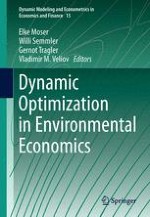2014 | OriginalPaper | Buchkapitel
Optimal Harvesting of Size-Structured Biological Populations
verfasst von : Olli Tahvonen
Erschienen in: Dynamic Optimization in Environmental Economics
Verlag: Springer Berlin Heidelberg
Aktivieren Sie unsere intelligente Suche, um passende Fachinhalte oder Patente zu finden.
Wählen Sie Textabschnitte aus um mit Künstlicher Intelligenz passenden Patente zu finden. powered by
Markieren Sie Textabschnitte, um KI-gestützt weitere passende Inhalte zu finden. powered by
